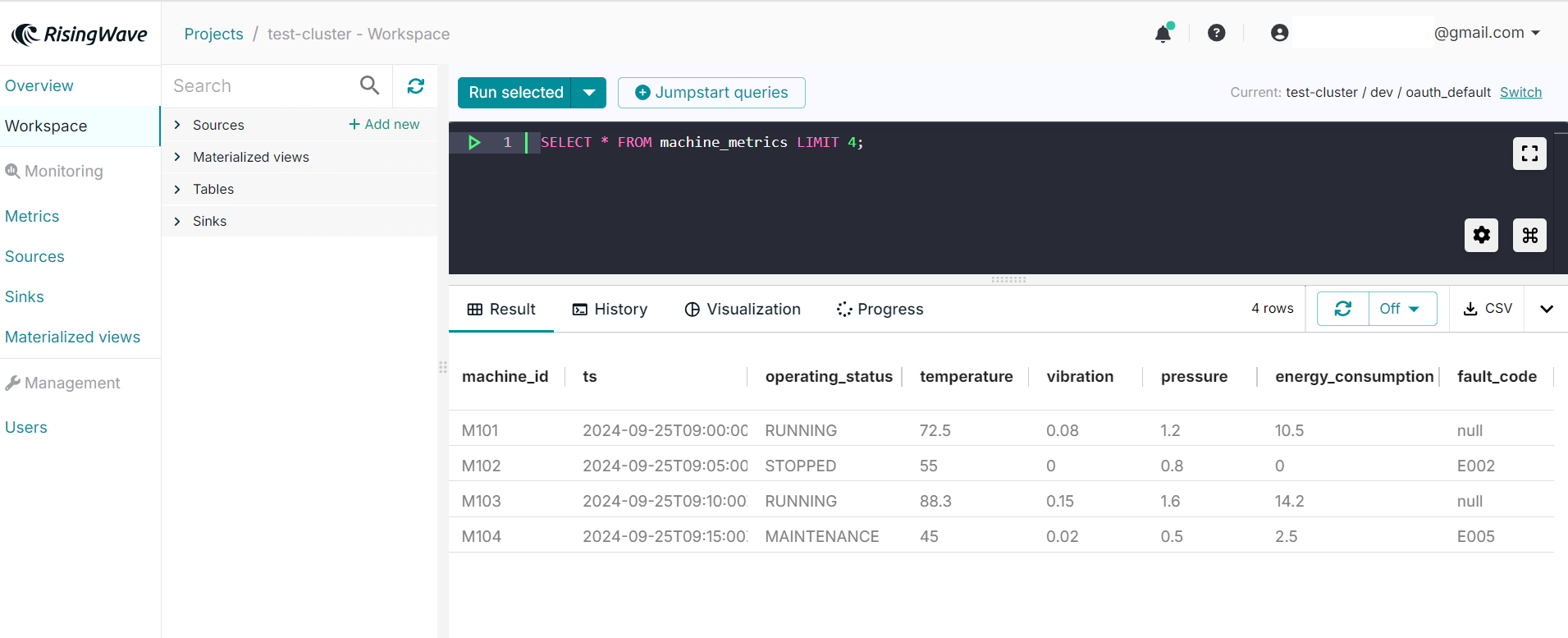Set up the Coreflux Broker
This guide walks you through the steps to set up a Coreflux broker on Coreflux Cloud and connect it to RisingWave for data ingestion. For more details about Coreflux, please refer to the Coreflux documentation.1. Sign up for a Coreflux Cloud account
Start by signing up for a free Coreflux Cloud account, which includes a 7-day free trial of the Coreflux Online MQTT Broker. To create an account, visit Coreflux Cloud.
2. Create a Coreflux Cloud Broker
After creating your Coreflux account, you can choose from three plans: FREE TRIAL, PLUS PLAN, and ENTERPRISE PLAN. To set up a free MQTT broker, select FREE TRIAL.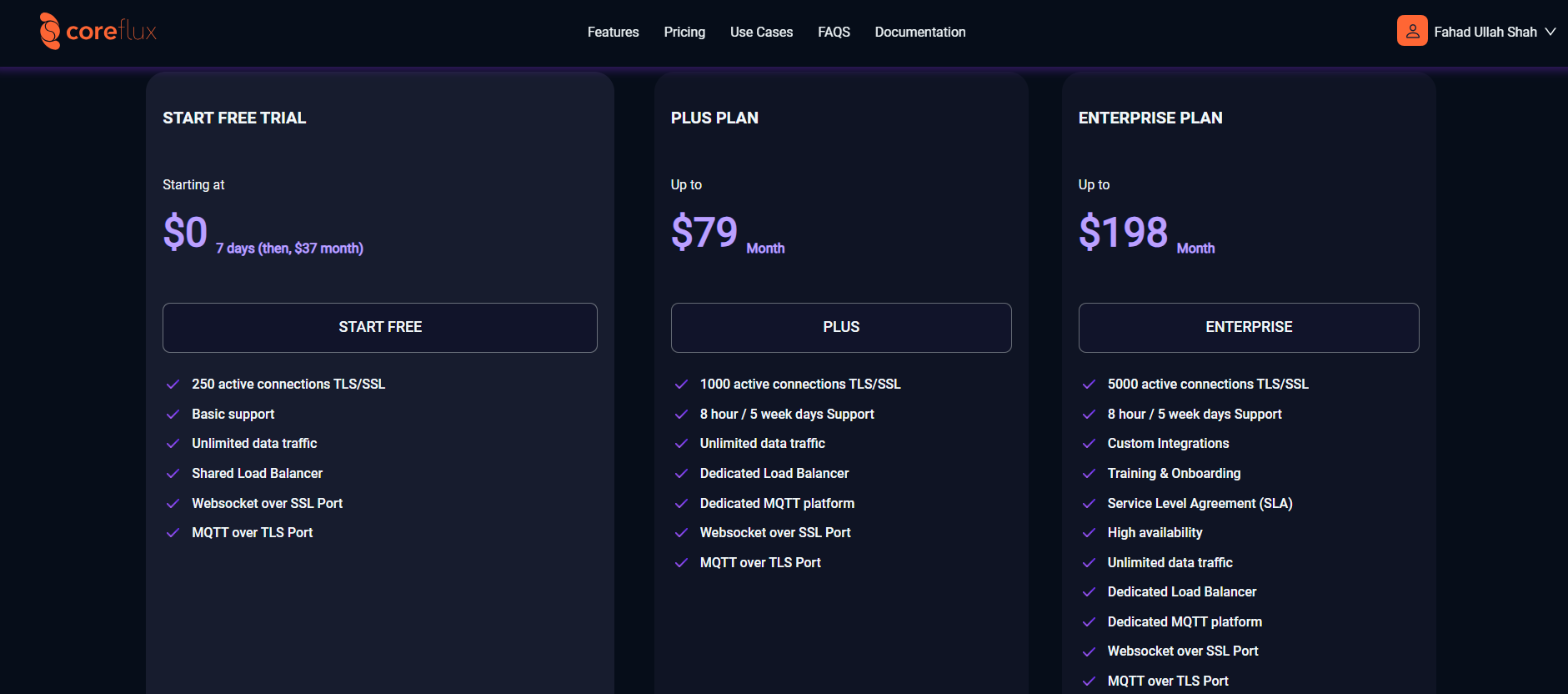
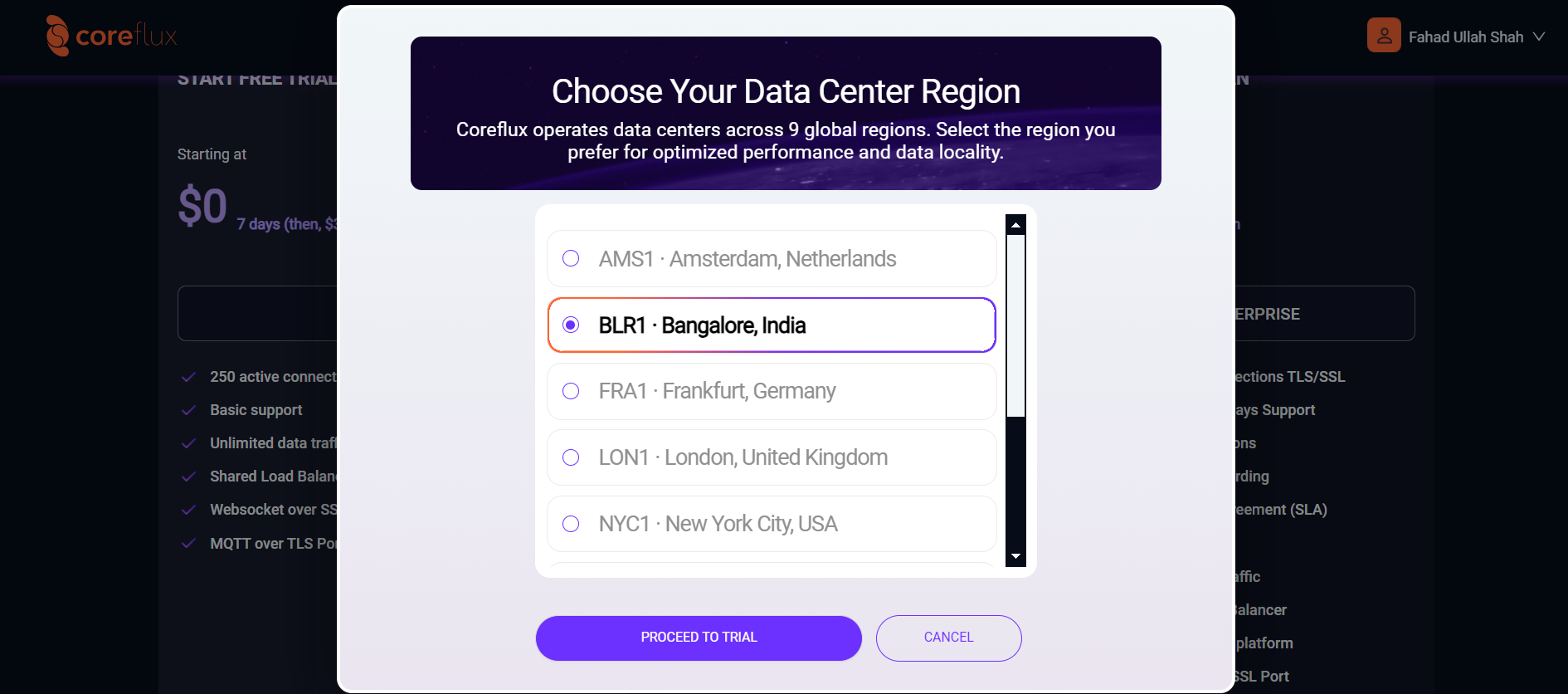
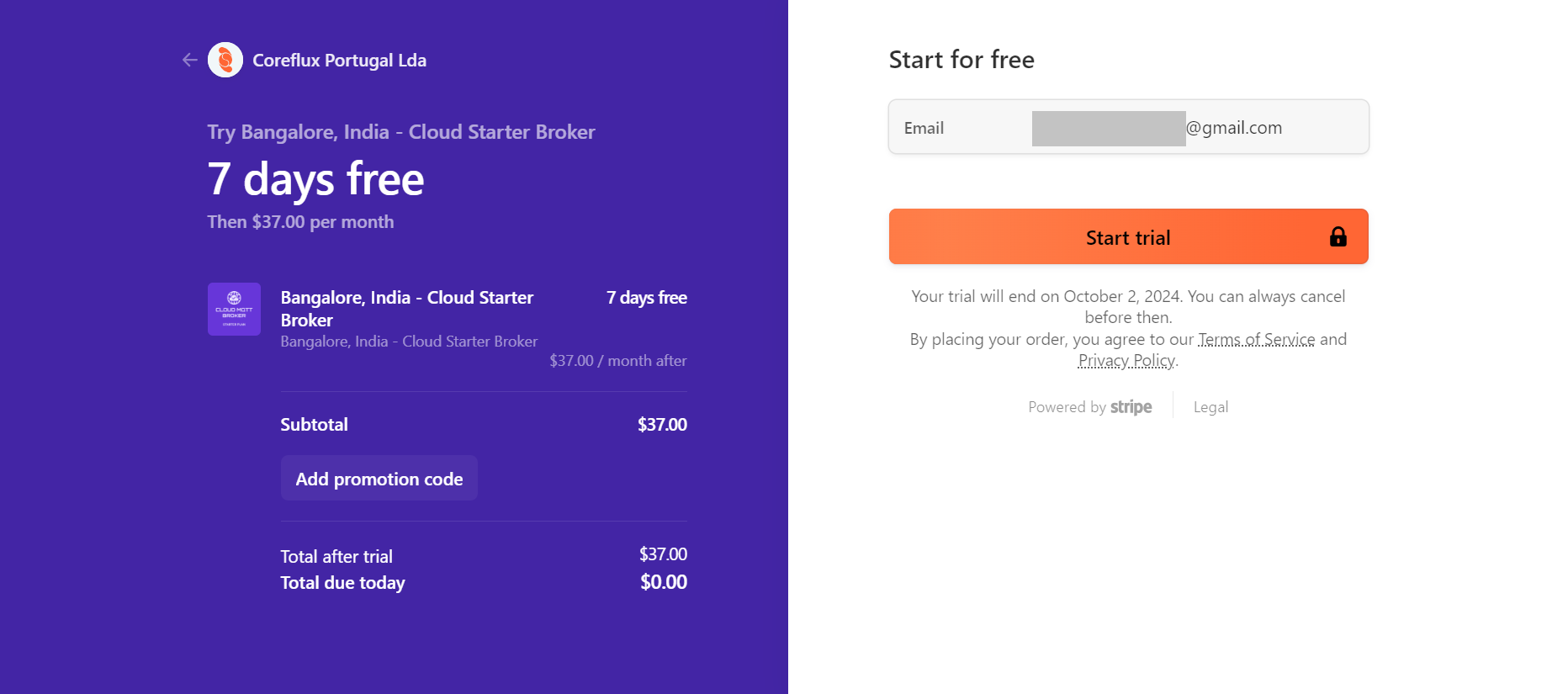
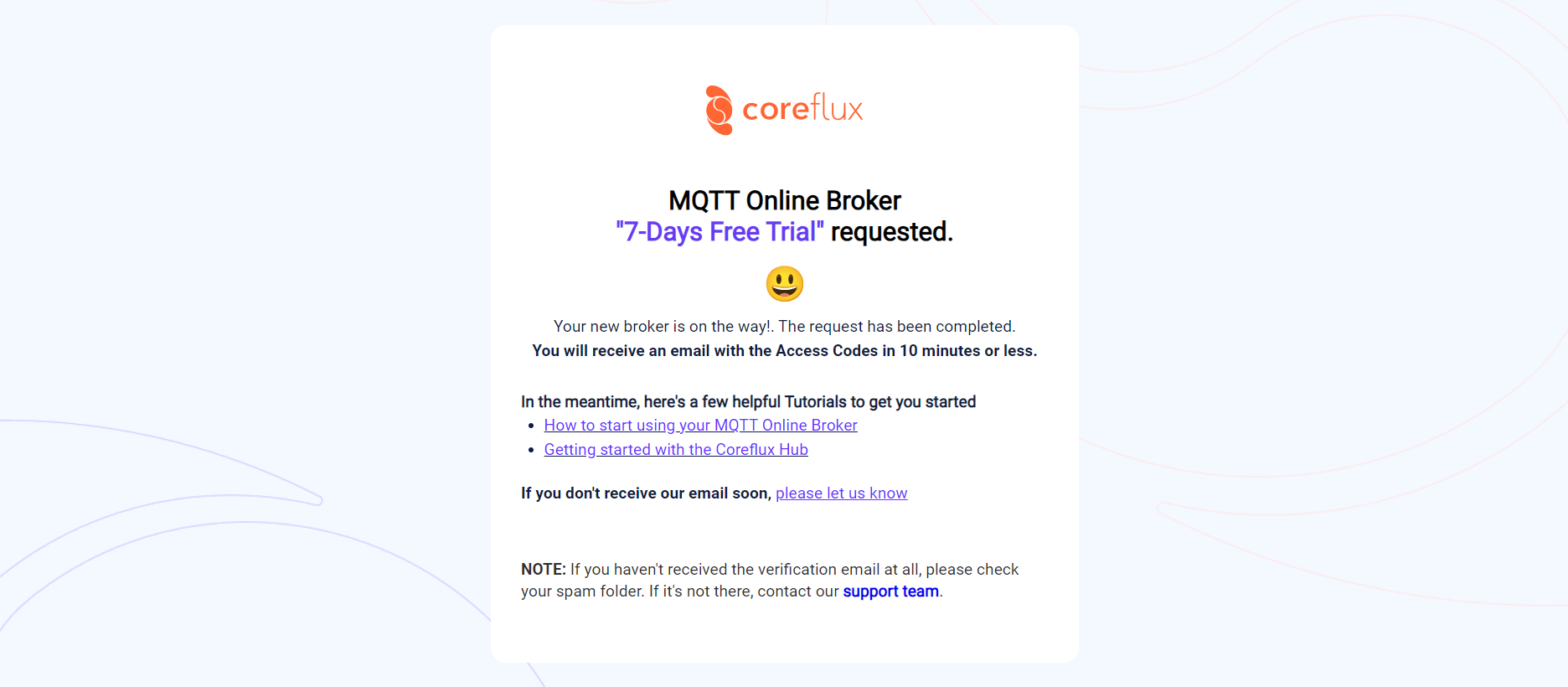
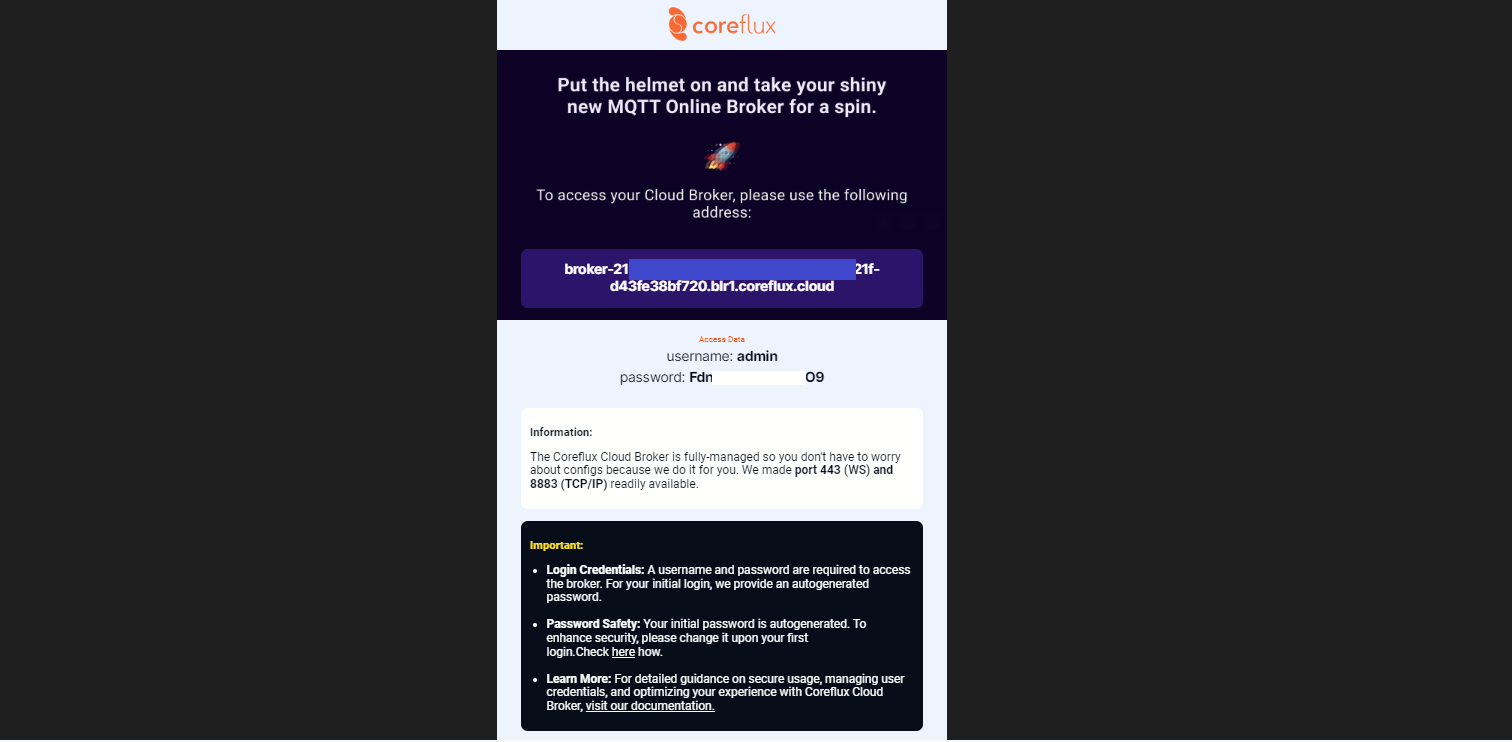
factory/machine_data.
Ingest and process fata from the Coreflux Broker
1. Create a RisingWave cluster
Create a RisingWave cluster in RisingWave Cloud using the free plan. For more information, refer to the RisingWave Cloud documentation.2. Create a source
Once you have deployed the RisingWave cluster, create a source in the Workspace using the following SQL query: